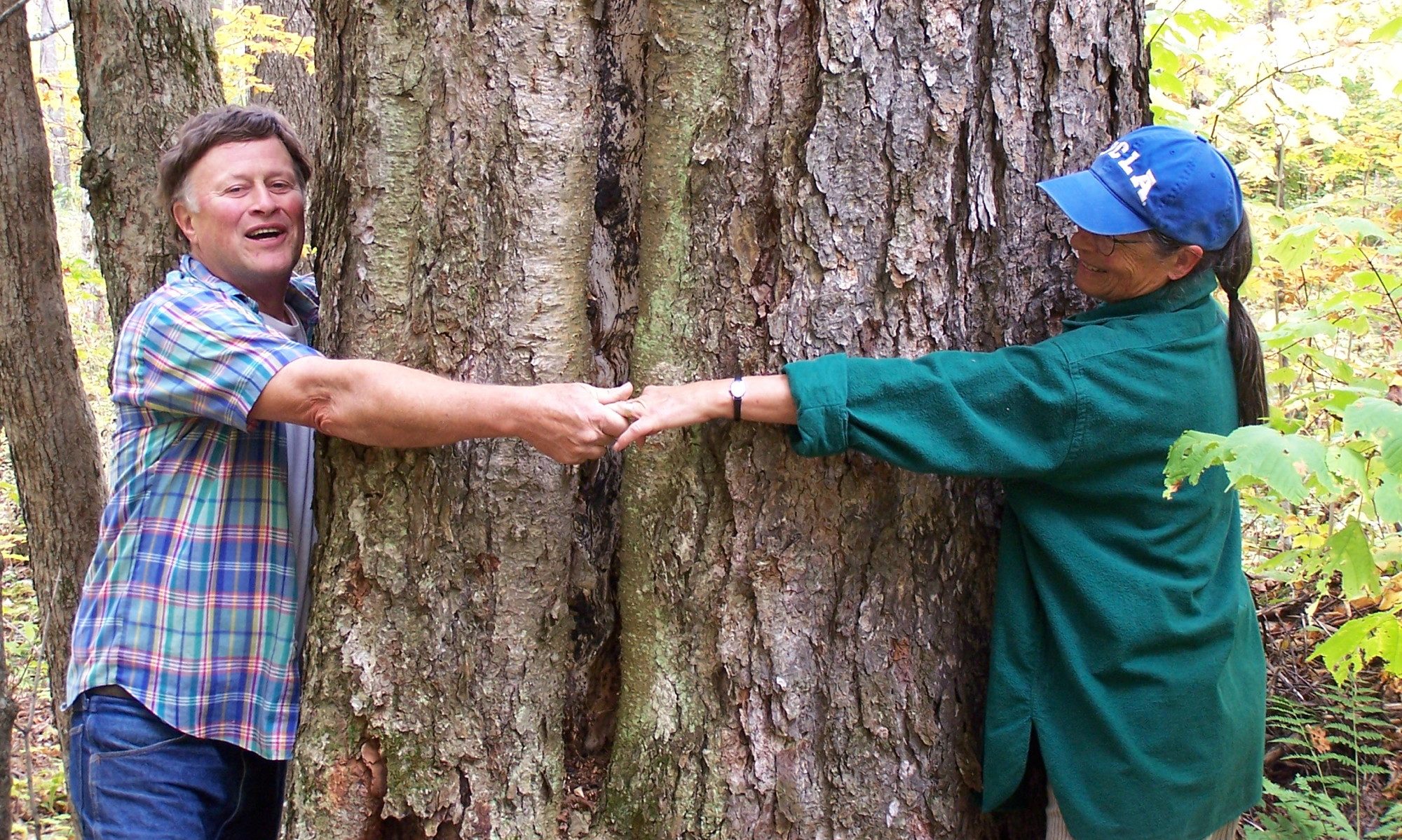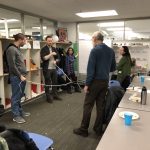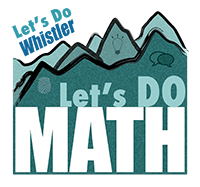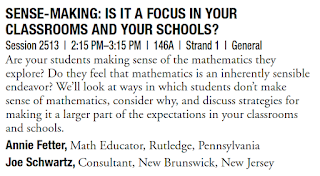Time for a guest blog post! Emily Payán is a beginning teacher at a high needs elementary school in a large suburban school district north of Minneapolis. Her mother, Margaret Williams, is the district’s Teaching and Learning Specialist for K-2 Math. Margaret is also an adjunct instructor for a local university and happened to be Emily’s Math Methods instructor. I know Margaret because she is part of the Minnesota “math family” that I’ve gotten to know while serving on the leadership team for Math On-a-Stick at the Minnesota State Fair. As a prelude to inviting me to lead a day of professional development for all the K-5 teachers in her district this August, she buttered me up by telling me this great story about the huge effect my advice from the previous August had had on her daughter’s experience teaching kindergarten. I replied, “Sure, I’ll do the PD, but you and Emily have to write up your story and I’ll post it on my blog.” All parties kept up their end of the bargain, and here’s what they wrote.
Margaret: I was looking forward to hanging out with Annie while volunteering at Math on a Stick during the 2016 MN State Fair. My daughter, Emily, had just finished her first year of teaching. Her second graders made wonderful progress in math but, as is often the way for beginning teachers, she was being moved to kindergarten. Being able to talk with Annie and get suggestions regarding the K math experience was going to be awesome!
Emily: To say I was nervous would be an understatement. I had completed my student teaching in a kindergarten classroom in a neighboring district. In this classroom, worksheets were the modus operandi and manipulatives were frowned upon. Needless to say, I had no idea where to start or what skills to engender in my new students to set them up for success in their schooling.
Margaret: Right! It was frustrating for me, as her mentor, to see and hear how the student teaching experience had been. Once she had her own classroom, we worked together a lot in planning math lessons for second grade using a Cognitively Guided Instruction framework for implementing Everyday Math. What would that look like in kindergarten? I was excited to talk to Annie. I was pretty sure I knew what she would say: The children should have lots and lots of opportunities to count collections. I was wrong. When Annie and I had a chance to talk, she told me that the most important thing Emily could do, as a K teacher, was to hold her students accountable for making sense.
Emily: While this made sense for a mathematician of any age, I had to wonder How on earth do I start when only three of these students have had a preschool experience? Less than half of my class exhibited predictors that would indicate foundational skills and concepts for number sense and future success in mathematics. My mom’s Math Methods course included lots of conversations around Boaler and Dweck’s work regarding mindsets and mathematics. I knew that if I could just get these kids to engage in real world math without the fear of mistakes, they would be successful and confident – regardless of what their initial assessments indicated.
My mom helped me collect items such as buttons, pine cones and blocks as well as pictures of real world things that would be interesting to five year olds: puppies, turkeys, plants (after all, math is EVERYWHERE!). I also used resources from Christopher Danielson. His book, Which One Doesn’t Belong and his open-ended approach to counting in picture books inspired my students to value multiple perspectives and to think of math as a creative domain. Trying to pull all this together felt overwhelming. Looking back, I think this was good. It wasn’t long before these “struggling” kindergarteners were mathematizing the world around them and, just as importantly, talking about their thinking. They were all in.
Conversations started flowing as they worked through their reasoning. I challenged them with simple questions like, How do you know?, Do you agree with what Ylva said? Giving an answer wasn’t enough, they had to be able to talk the class through their thinking. Sometimes the justification didn’t make sense to someone and they began to (respectfully) challenge one another and ask questions of their classmates. It was fantastic! I had eighteen 5 and 6-year-olds engaging in deep, meaningful questions about all types of mathematical tasks: addition and subtraction, multiplication and division.
This means that mistakes were inevitable. I intentionally modeled making mistakes and talked about Boaler and Dweck’s research on the brain growth that happens when a mistake is made and thought through. We watched videos on synapses and even had class meetings in which we all shared something from the day that was challenging. We congratulated each other on making our brains stronger by ‘sticking with it’ and not giving up. By the middle of the year, excitement beamed across their faces when a mistake was made. They knew that this meant they were on to something, and they accepted the challenge.
For example, my mom (known in my classroom as “Nana Math”) had taken a picture of a group of turkeys and sent it to my class to think about what was mathematical. Autumn decided she would count the legs of the birds – three turkeys were standing and two were sitting. Counting the legs she saw, she decided there were five legs. Dakota studied the photo a little more and thoughtfully explained, “I think there are more legs, Autumn. I think there are legs we can’t see. Each turkey should have 2 legs, right?”
Margaret: These little problem solvers were on fire. It was amazing to listen to them explain their thinking. I would go into Emily’s classroom to help with assessment interviews and wonder when was I going to get to the low achieving students. These kids were confident and supportive of each other even though they often challenged each other’s ideas. It was a math teacher’s paradise! Emily will be teaching Grade 2 this coming year. We look forward to another year of focusing on reasoning and making sense!
I can’t wait to hear about Emily’s second grade experience this year when I see Margaret again next summer in Minnesota. Maybe she’ll send me some updates before then. And by the way, y’all should come join us at Math On-a-Stick!





 Thanks to everyone who got up and did math and thinking about sense-making with me so early this morning! I hope you had some good conversations with your partners in those moments where I asked you to chat. Hopefully some of you even made some new friends.
Thanks to everyone who got up and did math and thinking about sense-making with me so early this morning! I hope you had some good conversations with your partners in those moments where I asked you to chat. Hopefully some of you even made some new friends.

